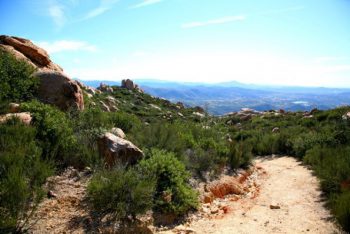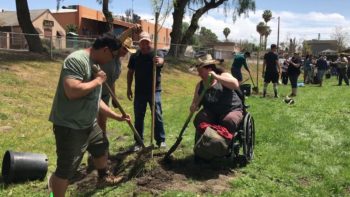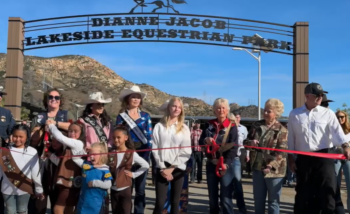Sleeping bags? Check. Tent, food, and ice? Check, check, and check. Firewood? If you have it, leave it at home. Don’t buy it either until you’re near the campground. Why?
County Park Rangers say the gold-spotted oak borer is killing tens of thousands of trees in San Diego County and they don’t want infestations to spread.
“They dig in about one to 2 inches and ruin the transfer process so nutrients can’t get to branches,” explains County Park Ranger Roger Covalt. Eventually, the trees die and may be cut down for firewood, but the larva or little grubs in the wood live on for at least a couple of years. Taking that infested firewood to a campground may be the death of even more oak trees and the ruin of what was once a beautiful park.
The damage already ranges from Pine Valley north to Lake Henshaw with ground zero being the Cuyamaca area. Three County parks struggling with the pest include Dos Picos in Ramona, William Heise near Julian and Louis Stelzer County Park in Lakeside. Park officials fear the beetle is also attacking trees at Volcan Mountain Open Space Preserve, also located near Julian.
The gold-spotted oak borer is a brown flat-headed beetle with gold spots on its wings. The pest attacks Coast live oaks, Canyon live oaks and California black oaks. So where did it come from? The borer was first discovered in 2006 along State Route 79 and County Entomologist Tracy Ellis believes it entered San Diego County through firewood brought from Arizona. Ellis says the tiny beetles do not seem to cause the same kind of damage in Arizona but scientists haven’t figured out the reason why yet. There are some but no significant natural enemies here.
“The area of concern is that the borer will spread northward from Julian and make the jump to Palomar Mountain,” said Ellis. “As far as California goes, this pest is only found in SD County.”
Covalt sees the damage first-hand. He is a Supervising Park Ranger with the Vegetation Management Program. He’s based out of William Heise County Park, and he sees the signs of the pest everywhere; from the browning at the crown of the tree to red stains on the trunk to the little D-shaped holes where the adult beetles bore their way out from the bark. “If there are 25 exit holes, the tree is already a goner,” said Ellis.
One of the oldest oaks in San Diego County used to stand near the main restroom at Heise. The tiny brown beetle, smaller than a penny, devastated the majestic tree which once stood about 60 feet tall with a canopy arching over 70 feet. That tree had to be cut down along with about 1,000 other oaks of all sizes. Right now, there aren’t any effective ways to fight the infestations. Bio-control methods will probably be tested at Heise, but all that can be done right now is to try to contain the infestations.
So what can you do? Buy it where you burn it and certainly don’t bring any back home with you. Ellis says some firewood is okay for the campground, specifically avocado, citrus, and eucalyptus firewood. Commercial firewood is fine as long as it doesn’t have any bark on it but check with your campground before taking any firewood on your trip. Ellis says certain campgrounds in the county are not allowing entry of firewood from other places in the county; you’re required to buy it at the campground. Covalt says Heise is giving away its cut firewood but only to visitors who plan to burn it at the park.
There isn’t a formal quarantine, but local, state and federal agencies are working together to try to protect our oak trees. We can help stop the spread of the gold-spotted oak borer by buying our firewood close to the campground where we plan to burn it. Summer and camping go hand in hand, just be sure you don’t pack any pests for the road!

Gold-spotted oak borer larvae






